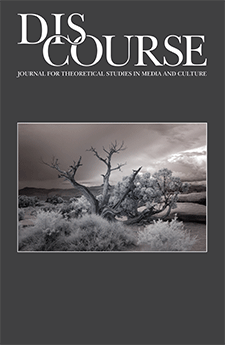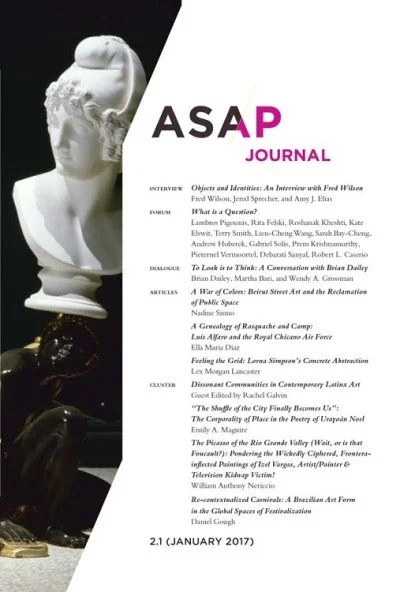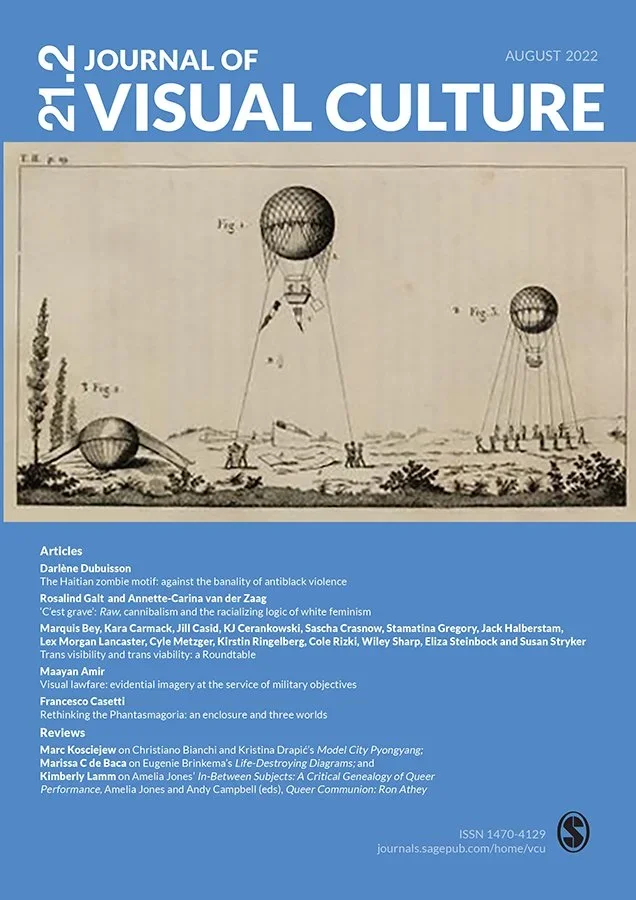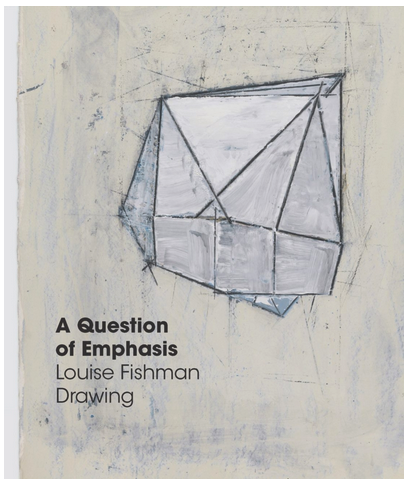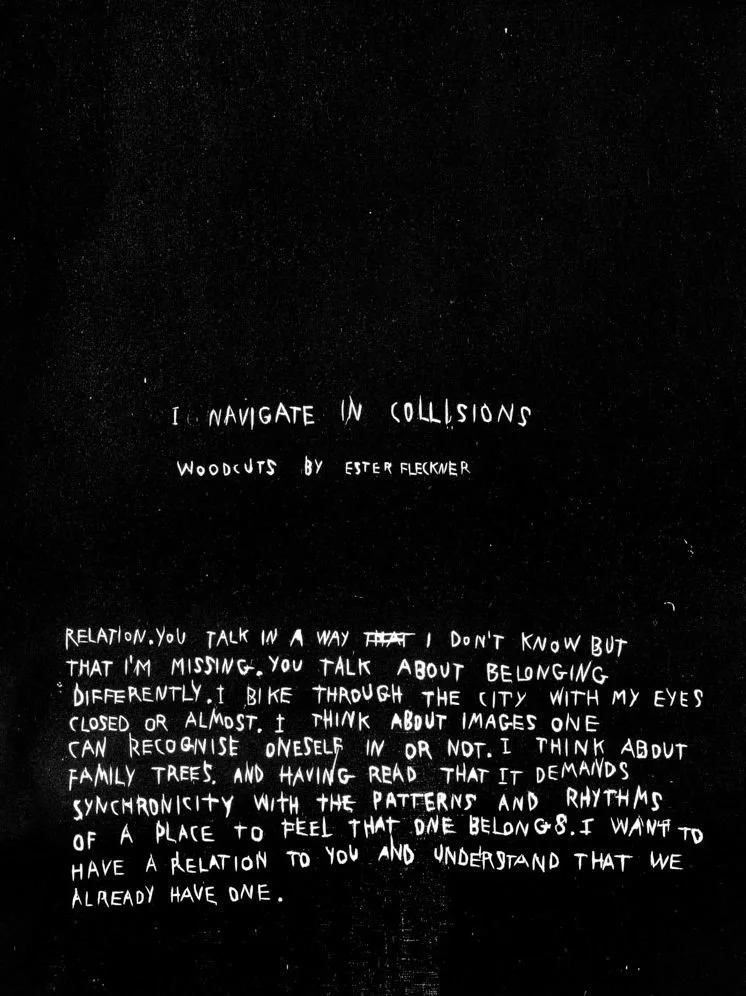Dragging Away:
Queer Abstraction in Contemporary Art
Duke University Press - 2022
Dragging Away: Queer Abstraction in Contemporary Art argues that abstraction is a tactic of queering in contemporary art that contributes to critical politics of gender, sexuality, and race, while refusing oppressive representational logics. Focusing on the formal and material innovations of current queer and feminist artists, this book attends to their drag on certain loaded modernist strategies—the hard edge, the grid, color, and the readymade—in order to draw out their social and political capacities and relevance for the present. Lancaster pursues comparative analysis between modernist and mid-century abstract artworks and their contemporary interlocutors, demonstrating how abstraction does queer work through visual and material processes of dragging that expose the violence of abstraction while at the same time exploding processes of categorization and signification. Rather than rescue the problematic potential of abstract forms and tactics that can do harm, Lancaster attends to the mixed feelings at play in contemporary politics of abstraction, engaging with abstraction affectively rather than iconographically. Arguing against the tendency to reduce abstract form to a bodily sign or biographical symbolism, this book makes a methodological intervention in the field of art history by combining a politically-driven formalist and materialist analysis with queer, feminist, and critical race theories in order to take these artists’ formal and material experimentation seriously as social and political praxis.
Reviews
Julia Bryan-Wilson, “What is Queer About Contemporary US Art History? Queer Behavior: Scott Burton and Performance Art, by David J. Getsy; In Between Subjects: A Critical Genealogy of Queer Performance, by Amelia Jones; and Dragging Away: Queer Abstraction in Contemporary Art, by Lex Morgan Lancaster,” The Art Bulletin 106; 2 (2024): 155-161
Sarah Cowan, “Dragging Away: Queer Abstraction in Contemporary Art and Jennifer Packer: The Eye Is Not Satisfied With Seeing,” Woman’s Art Journal 44, no. 2 (fall/winter 2023): 43–46
ARTICLES
Trans Abstraction, Decomposing Figuration: Young Joon Kwak and Kiyan Williams
Texte Zur Kunst 129 “Trans Perspectives” (Spring 2023)
This essay argues that the sculptures and installations of Young Joon Kwak and Kiyan Williams offer trans and crip tactics of abstraction that materialize impure and expansive conceptions of embodiment through decomposing figurations. In the works of Kwak and Williams, bodies are partially present, but refuse to cohere or compose into representative bodies (bodies that must either maintain normative composition or be subject to ongoing surveillance and violence). Deploying an object-oriented approach along with affective, relational understandings of trans and crip as material processes and forms of engagement with the world rather than merely appearances, Lancaster opens the generative space of tension between abstraction and figuration as a site for navigating corporeal unmanageability. Kwak and Williams deploy material processes that interrupt perceptions of a form-as-body while foregrounding the often-violent material histories and forces that shape bodies, including the potential violences of abstraction. At the same time, their work underscores the fugitive capacities of their materials, which circumvent control and subvert stable binary notions of what is natural or artificial, internal or external, past or present. In short, they show us how to work with, and from within, unmanageable material states.
The Wipe: Sadie Benning’s Queer Abstraction
Discourse: Journal for Theoretical Studies in Media and Culture 39.1 (2017): 92-116
Included in Getsy and Gossett, A Syllabus on Transgender and Nonbinary Methods for Art and Art History, Art Journal, 80, no. 4 (2021): 100-115.
Sadie Benning’s Wipe paintings raise questions about the viability of abstract painting for a queer feminist art practice. Benning deploys abstraction in ways that speak to the specificity and difference that is so crucial to queer projects, while also refusing the focus on singularity of experience that places the burden of representation on artists marked “minority.” Using close formal analysis and comparisons with high modernist works by Robert Ryman and Mark Rothko, this article elaborates Benning’s tactic of “the wipe” as a challenge to the history of abstraction, a deliberate tool for reckoning with oppressive structures and difficult forms of history without wiping away the grit or residue of its contact in the present.
Feeling the Grid: Lorna Simpson’s Concrete Abstraction
ASAP/Journal 2.1 (2017): 135-159
The grid operates as an aesthetic and political tactic in the photo-based felt installation works of Lorna Simpson, and their refraction of Agnes Martin’s iconic grid paintings allows for alternative readings of the queer and anti-racist potential therein. Carrying the difficult history of photographic grids, which produce raced taxonomies of their subjects, Simpson’s grids refuse to picture bodies. But far from only a tool of normalization and surveillance, the grid also has political possibilities as a vector for queer forms of relationality and excess.
ESSAYS
Toni Schmale's Edging Aesthetics
First Monographs: Toni Schmale
Phileas - The Austrian Office for Contemporary Art
DISTANZ verlag, 2025
Liz Collins
Foreigners Everywhere: Biennale Arte 2024, edited by Adriano Pedrosa
Glitching Out with Linda Besemer
Linda Besemer: StrokeRollFoldSheetSlabGlitch, edited by Kristina Newhouse
Kleefeld Contemporary Art Museum, California State University Long Beach, CA, 2022
Taking up Linda Besemer’s “glitch” paintings within the postdigital field of art and scholarship, this essay considers how Besemer’s “glitching out”—as a tactic of abstraction—offers queer, feminist, transgender methods for undoing normative technologies that control gender and sexuality.
REVIEWS & ROUNDTABLES
Trans Visibility and Trans Viability: A Roundtable
Journal of Visual Culture 21.2 (2023): 297-320.
Marquis Bey, Kara Carmack, Jill Casid, KJ Cerankowski, Sascha Crasnow, Stamatina Gregory, Jack Halberstam, Lex Morgan Lancaster, Cyle Metzger, Kirstin Ringelberg, Cole Rizki, Wiley Sharp, Eliza Steinbock, and Susan Stryker.


